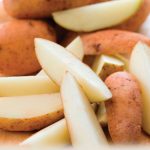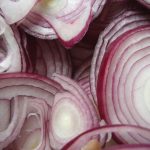 There’s no debate: The #1 most preventable risk factor for skin cancers, including melanoma, is sun exposure. Fortunately, it’s possible to enjoy outdoor life and still manage your risk. Here are a few tips:
There’s no debate: The #1 most preventable risk factor for skin cancers, including melanoma, is sun exposure. Fortunately, it’s possible to enjoy outdoor life and still manage your risk. Here are a few tips:
1. Shade Hunting: The sun’s rays are at their most potent between 10 a.m.-2 p.m. During those hours, find a shady spot or wear protective clothing such as wide-brimmed hats, long sleeves, pants and sunglasses.
2. Lather Up: Sunscreen is your friend. Choose a water-resistant variety with broad-spectrum coverage at SPF 30 or higher, and apply it everywhere. Broad spectrum lotions will protect you from both UVA and UVB rays. Reapply every couple of hours, even if it’s cloudy.
3. Hot Spots: Be extra careful if you’re playing near water, snow or sand. Those substances reflect sunlight, intensifying the sun’s effects and increasing exposure.
4. No Go: As much as we all love having that perfect, even tan, tanning beds are not your skin’s friend. Their UV-intensive light causes not only increased cancer risk, but also wrinkles. Use a self-tanner lotion or spray tan instead.
ABOUT THE AUTHOR
› Dr. Susana Khouri is a Board-Certified Dermatologist at the Dermatology & Plastic Surgery Center; 580 Crandon Blvd., Key Biscayne. For more info, call 305.361.8200 or visit MiamiDermatologyCenter.com.
Unexpected Superfoods
Forget pomegranates and acai berries. These everyday foods pack a surprising nutritious punch, and can easily become part of your everyday diet.
 Go Nutty
Go Nutty
Peanut butter is packed with fat — heart-healthy mono-unsaturated fat, that is. It’s also an excellent source of protein, fiber and folate. If that weren’t enough, a recent study linked it with decreased risk of heart attack.
 Spud Power
Spud Power
The potato might look humble, but it’s more potassium-packed than a banana. In fact, spuds are a nutrient powerhouse, and offer around 135 calories with zero fat and cholesterol. Just don’t load them with cheese or sour cream.
 Aromatic Goodness
Aromatic Goodness
Onions are possibly our most overlooked vegetable, but they’re great sources of cancer-fighting compounds such as quercetin & allyl sulfides, along with protein, fiber and most of other vitamins.











